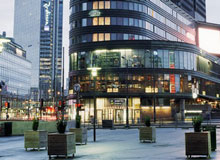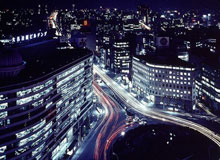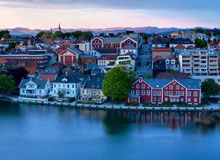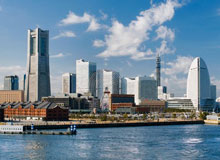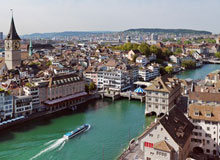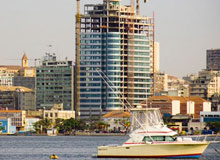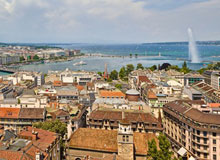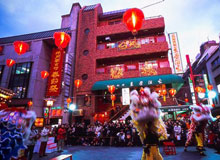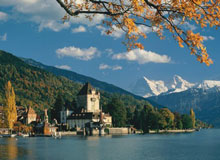Thorium Can Fuel the Next Millenium
Thorium is a naturally-occurring, slightly radioactive metal discovered in 1828 by a Swedish chemist, Jons Jakob Berzelius, who named it after Thor, the Norse god of thunder. The silvery white metal is found in small amounts in most rocks and soils, where it is about three times more abundant than uranium. Typical garden variety soil commonly contains an average of around 6 parts per million (ppm) of thorium.
Applications
Thorium oxide, also called thoria, has one of the highest melting points of all oxides at 3300°C. When this oxide is heated in air, thorium metal turnings ignite and burn brilliantly with a white light. Because of these properties, thorium has found applications in welding electrodes, heat-resistant ceramics, light bulb elements, lantern mantles and arc-light lamps. Glass containing thorium oxide has a high refractive index and dispersion and is used in high quality lenses for cameras and scientific instruments.
Sources and geographical distribution
The most common source of thorium is the rare earth phosphate mineral, monazite, which may contain up to about 12 percent thorium phosphate; however, the average is closer to a 6-7 percent range. Monazite is found in igneous and other rocks but the richest concentrations are in placer deposits, concentrated by wave and current action with other heavy minerals. World monazite resources are estimated to be about 12 million tonnes, two-thirds of which are in heavy mineral sands deposits on the south and east coasts of India. Australia is estimated by the USGS to host approximately 24 percent of the world’s thorium reserves. A large vein deposit of thorium and rare earth metals have been discovered in the Lemhi Pass region of Idaho and Montana.
Going nuclear
Although not fissile itself, thorium has started to reemerge as a tempting prospect to employ as fuel in nuclear power reactors. Thorium 232 will absorb slow neutrons to produce uranium 233, which is fissile (and long-lived). The irradiated fuel can then be unloaded from the reactor, the uranium 233 separated from the thorium, and fed back into another reactor as part of a closed fuel cycle. Alternatively, uranium 233 can be bred from thorium in a blanket, the uranium 233 separated, and then fed into the core.
The use of thorium-based fuel cycles has been studied for about 40 years, but on a much smaller scale than uranium or uranium/plutonium cycles. Basic research and development has been conducted in Germany, India, Japan, Russia, the UK and the USA. China and India have been among primary catalysts in research efforts to use it. Test reactor irradiation of thorium fuel to high burn-ups has also been conducted and several test reactors have either been partially or completely loaded with thorium-based fuel.
Thorium can be used in Generation IV and other advanced nuclear fuel cycle systems.
China has been working on developing the technology for sodium cooled fast reactors which are a type of liquid fluoride thorium reactors (LFTRs). The advanced breeder concept features a molten salt as the coolant, usually a fluoride salt mixture. This is hot, but not under pressure, and does not boil below about 1400°C. Much research has focused on lithium and beryllium additions to the salt mixture. In mid-2009, AECL signed agreements with three Chinese entities to develop and demonstrate the use of thorium fuel in the Candu reactors at Qinshan in China. _UraniumInvestingThe best ongoing source for information on thorium energy is Kirk Sorensen's blog "Energy from Thorium".
Kirk is featured in the introductory video below. You can click on the YouTube icon on the video below to watch the vid at YouTube, and to find links to several related videos -- some of them well over an hour in length.
Another blog dedicated to the molten salt reactor is the Nuclear Green blog.
Here's more on thorium, from a piece in Popsci from last summer:
An abundant metal with vast energy potential could quickly wean the world off oil, if only Western political leaders would muster the will to do it, a UK newspaper says today. The Telegraph makes the case for thorium reactors as the key to a fossil-fuel-free world within five years, and puts the ball firmly in President Barack Obama's court.
Thorium, named for the Norse god of thunder, is much more abundant than uranium and has 200 times that metal's energy potential. Thorium is also a more efficient fuel source -- unlike natural uranium, which must be highly refined before it can be used in nuclear reactors, all thorium is potentially usable as fuel. _Popsci
Another basic overview on thorium
Yet another overview from Wired
Taken from an earlier article published at Al Fin Energy
Labels: energy








